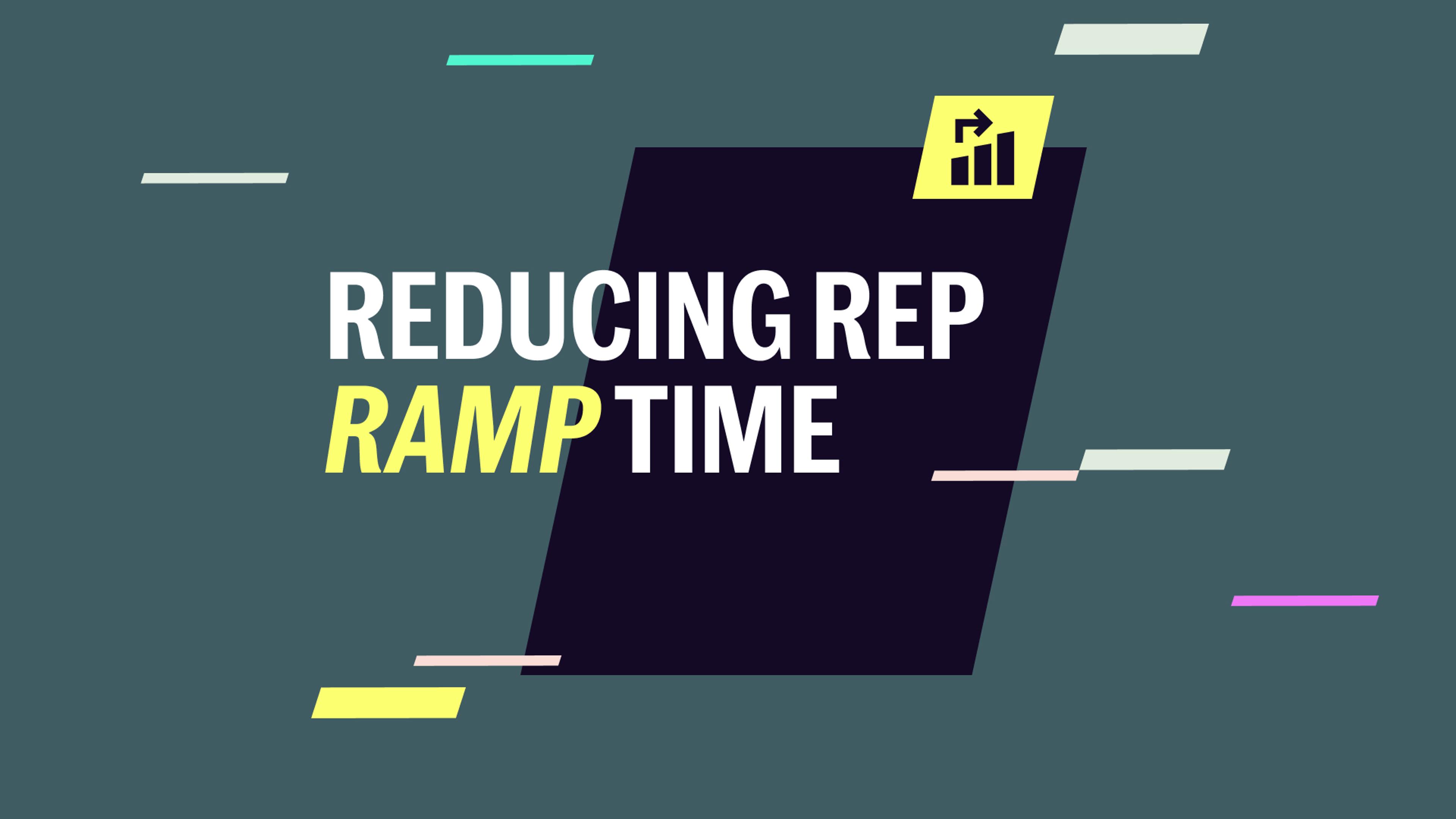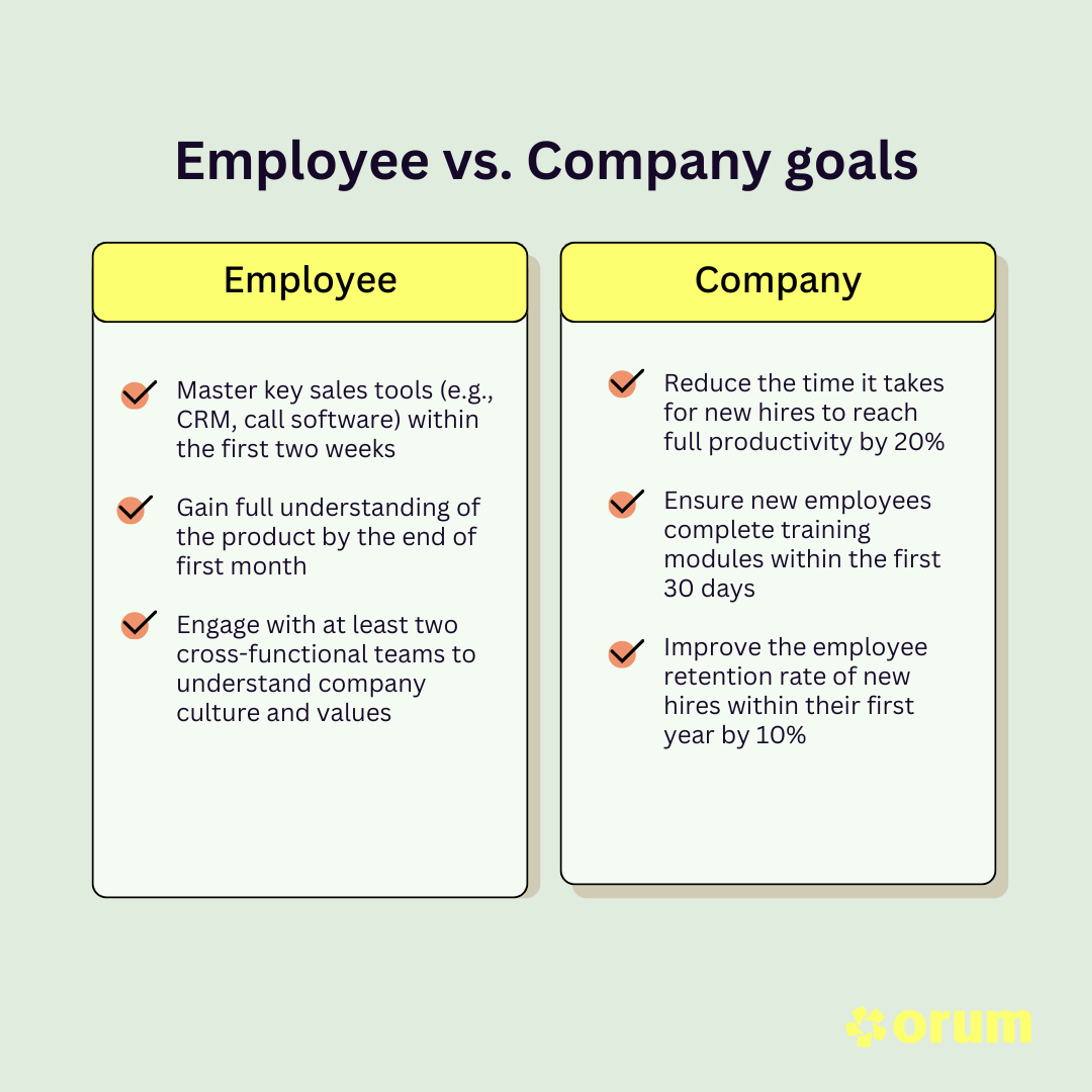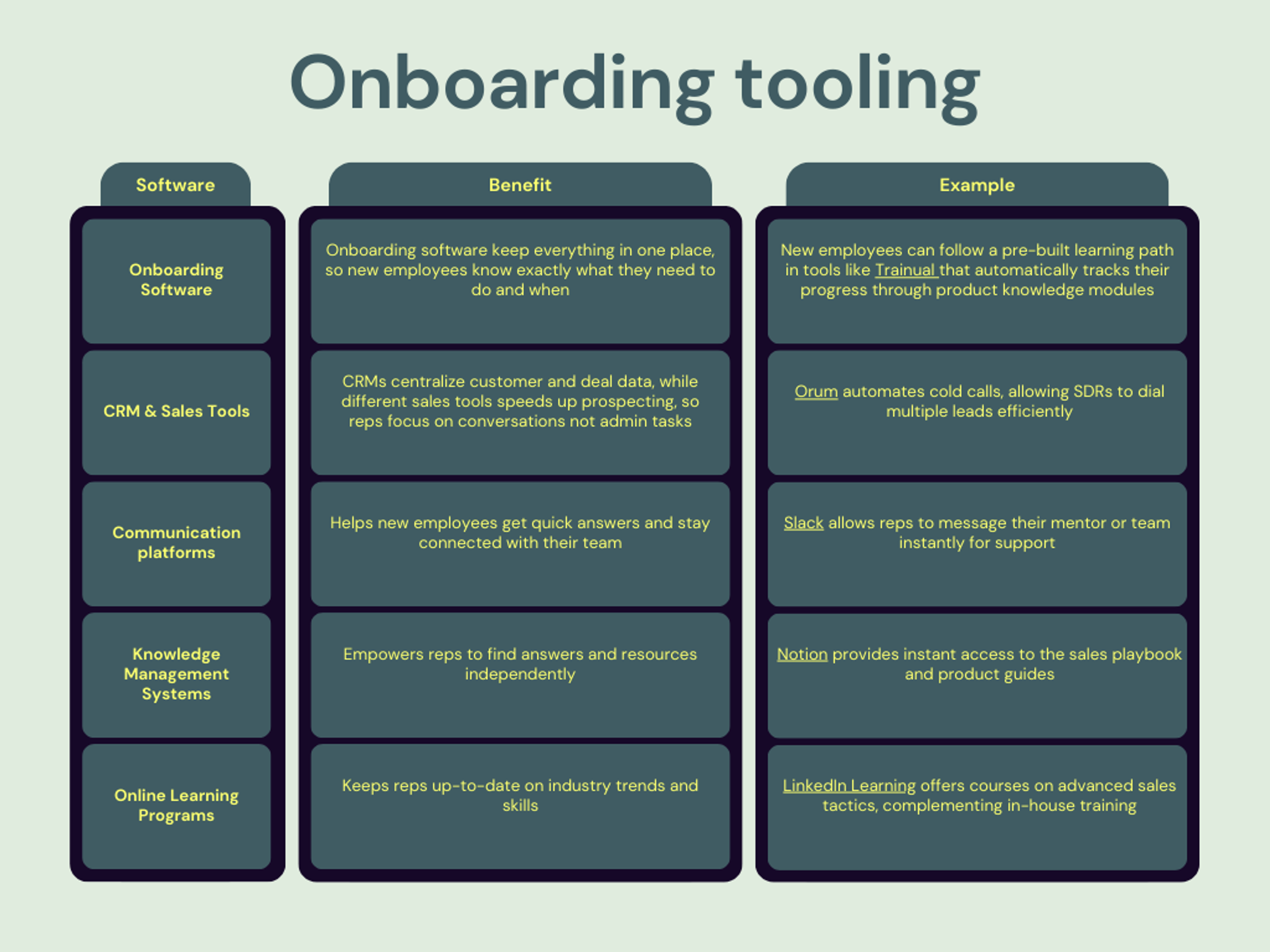How To Make Your Sales Onboarding Plan More Efficient


According to our 2024 State of Sales Development Report, 70% of sales leaders expect to add more SDRs to their teams in the next 12 months. This means scaling efficiently has never been more important—but onboarding new hires quickly and effectively often creates a bottleneck.
For instance, onboarding a large number of new hires simultaneously can overwhelm existing training resources and lead to inconsistent performance among the new team members.
In this guide, we’ll explore how to streamline your sales onboarding process. Learn all about structured timelines, useful tools, and the right strategies to accelerate ramp-up times.
By the end of this read, you’ll have a thorough onboarding plan that gives your new team members everything they need to hit the ground running.
Supercharge your sales team
With Orum, you can use call insights and analytics to identify coaching opportunities and unlock your team’s full potential.
Request a demo
1. Assess your current onboarding process
Start by identifying key components of your onboarding plan. This includes training modules, mentorship programs, role-playing sessions, and all the tools your sales team relies on.
For example, if you have a mentorship program, ask yourself how good it is at connecting new hires with experienced reps. Are the training materials relevant and up to date? Are the tools you provide helping reps perform better? Realistic self-evaluation matters here. Otherwise, your onboarding program will only look good on paper.
The next step is to dig into your data to find areas for improvement. Focus on metrics like ramp-up times, sales performance during onboarding, and employee engagement. For instance, if your average ramp-up time is longer than industry benchmarks, you may need to switch up your training or provide more hands-on coaching.
💡Pro tip
Let’s say your onboarding process includes several weeks of product training, but you know sales reps struggle with live cold calls even after completing this stage.
Using a Call Library, new hires can review successful sales calls to quickly understand what works and why. This can dramatically cut down the learning curve.
Pair this with the insights from Sales Analytics, and you can spot exactly where new team members are falling behind. Knowing this makes it easier to support them in their first month. You’ll need to make adjustments to create a truly effective onboarding program.
2. Set onboarding goals
Bear in mind that starting a new job can be stressful, especially in sales. As a sales leader, you need to fight SDR burnout. Be mindful of the amount of information new employees need to absorb in their first week and commit to providing extra support in the first six months as they learn all the ropes.
You want the new salesperson to feel their role is well-structured. Their first impression sets the tone for their entire employee experience. This is why having specific, measurable onboarding goals matters.
You need to set two types of onboarding goals—for the employee and the company:
- Employee onboarding goals: Focus on the individual’s development and performance during their onboarding period
- Company onboarding goals: Tracking the effectiveness of the onboarding process (i.e., the onboarding program is not only helping employees ramp up but also contributing to the company’s broader objectives)
See examples of both types of goals in the table below.

But before you fully define onboarding goals for your new sales hire, you’ll need to:
- Determine what the new hires need to know
- Outline which co-workers they should connect with
3. Determine what new hires need to know
To get new hires up to speed fast, create an employee onboarding checklist. Prevent them from feeling overwhelmed by parsing big tasks into smaller ones.
For sales employee onboarding, you can organize the job-related knowledge transfer into two main areas:
- Essential knowledge (product, sales processes, customer personas)
- Soft skills training (communication, negotiation, relationship building)
New team members need to familiarize themselves with the product. They need to know it inside out—features, benefits, and how it solves customer pain points. You can equip them with product resources, share the help center with them, invite them to product webinars, etc. But it’s equally important to walk them through the typical sales cycle and workflows, from lead generation to closing.
If your process involves a multi-touch, long sales cycle, make sure they understand the key touchpoints and how to move deals forward. Lastly, they need to have a clear picture of your target customers—who they are, their pain points, and what drives their decisions.
In sales, new hire onboarding needs to include shadowing a seasoned rep. This is how they’ll learn how to nurture accounts, close deals, and negotiate upsells or renewals.
📚Further reading
Check out our 2024 State of Sales Development report to discover how the SDR role is shifting, the impact of AI, and where sales leaders are investing their resources.
4. Outline who new hires need to meet
Getting new hires connected with the right stakeholders is critical, especially because closing deals is always a team effort. This is why getting to know people both from the sales team and cross-functional teams matters.
Meeting the sales team
Start by introducing them to their immediate co-workers and team leads. This will help them understand sales team dynamics and who to go to for support. Additionally, your HR team should equip them with an employee handbook where they can see the organizational structure and learn more about the hierarchy and responsibilities of different people within the company.
Meeting GTM teams
After that, make sure to facilitate meetings with marketing, customer success, and product teams so they can see how everyone contributes to the sales cycle. For example, understanding how marketing generates leads or how customer success handles onboarding can give new reps the bigger picture.
💡Pro tip
To prevent GTM teams from working in silos, encourage cross-functional collaboration from day one. Schedule regular brainstorming sessions to exchange ideas. Put it as a recurring event on the calendar to create a habit of meeting on a regular basis. Additionally, you can assign onboarding buddies from different teams and organize engaging employee orientation sessions.
5. Go over logistical requirements
Setting up the new employee with tools and resources contributes to a smooth onboarding experience. There are three key things to cover: administrative logistics, work environment setup, and compliance training.
- Administrative logins: Make sure they have access to all necessary accounts, software, and tools (e.g., email, CRM systems, and any other platforms they’ll need to do their job effectively).
- Work environment setup: Provide clear guidance on setting up workstations. This is especially important for remote employees. Make sure your company policy defines the type of hardware, internet connection quality, and communication tools they’ll need to have in place.
- Compliance training: Human resources will need to manage compliance training and new hire paperwork. Whether it’s security protocols, cold calling laws, or legal requirements, outline what needs to be completed and when to keep them compliant from day one.
Even before the sales rep’s first day, you can share some pre-boarding materials to set expectations and help them ease into their new job.
6. Use the right tools
To fully support your new employee, you need the right tools. In the table below, you can see different types of tools and how they might be used:

7. Create an onboarding timeline—and stick to it
Lastly, you need to establish an onboarding timeline–and closely adhere to it. This timeline should be presented on the employee’s first day to set the expectations for the following weeks.
A realistic timeline for the onboarding process prevents important steps from being overlooked. More importantly, new reps can build confidence by achieving small, manageable milestones. Here are some tips on how to make it work:
- Outline a structured timeline: Provide a week-by-week plan for the onboarding process, detailing training sessions, meetings, and evaluations.
- Regular check-ins: Schedule consistent one-on-one meetings to review progress, tackle challenges, and adjust the timeline as needed.
- Encourage feedback: Create opportunities for new hires to provide feedback on their onboarding experience, which can be used to make future improvements.
Without a clear timeline, training can become inconsistent, leaving the new employee feeling lost, anxious, or underprepared.
Get inspired: How Impetus decreased ramp-up time for their sales reps
Impetus, a digital engineering company, was facing challenges with ramping up new sales reps quickly and effectively. Cold calling is a high-pressure environment. Getting new team members up to speed can often take weeks. That’s where Orum came in.
Orum’s live conversation platform automates the dialing process, which means new hires could immediately focus on what matters most: Talking to prospects. Here’s what Matthew Chapman, Senior Business Development Manager, had to say about introducing the platform to their workflow:
“We had to onboard half of our North America team in two months and Orum was huge in getting those reps hit the ground running. One of the biggest things we couldn’t or didn’t quantify was how much Orum would help with both onboarding and allowing a limited team to still keep up with normal production.”
Thanks to Orum’s virtual Salesfloor, Impetus’s new reps were able to gain valuable insights. They listened to calls from other reps, which helped them ramp up, fast. They were quick to master objection handling and learn how to succinctly pitch their product.
As a result, the onboarding process became smoother and quicker, dramatically shortening the learning curve for new hires. The results speak for themselves: Impetus saw a 40% increase in opportunities and a 110% boost in meetings set—all with a smaller team.
Support Your New Employees From Day One
Creating an effective onboarding program is all about setting your new hires up for success right from the start. It’s not just about giving them tools and training. It’s about making them feel supported, connected, and confident in their new role. The first few weeks set the tone for long-term success, so make sure you leave a good first impression.
Since sales professionals work on commissions, it’s very important to set clear expectations, organize regular check-ins, and give them access to resources. This is how they’ll be able to contribute quickly.
Discover additional insights on how to review sales calls for SDR coaching and get a free sales call report template.
With each new employee onboarding, you’ll realize one thing: The stronger the support system, the faster they’ll ramp up and the more engaged they’ll be. This creates a positive ripple effect on the metrics you care about, such as employee engagement and employee retention.
Supercharge your sales team
With Orum, you can use call insights and analytics to identify coaching opportunities and unlock your team’s full potential.
Request a demo
Frequently asked questions about making onboarding more efficient
How do you make onboarding better?
To make onboarding better, you should use interactive training tools, provide mentorship, and personalize the experience based on the role. Create a structured onboarding process with small, manageable milestones so that your new hires gradually build confidence when performing their job duties.
How do you make onboarding fun?
Add gamification elements, interactive quizzes, and team-building activities to make onboarding fun. Celebrate small wins and milestones during the process. Help your new hires feel engaged and connected from day one with welcome messages, virtual coffee chats, and fun employee orientation sessions.
How do you create an effective onboarding process?
An effective onboarding process is structured, role-specific, and continuous. Start with a clear roadmap, define key milestones, and ensure regular check-ins with managers. Provide easy access to resources, encourage peer support, and continuously gather feedback from new hires to improve the process.





